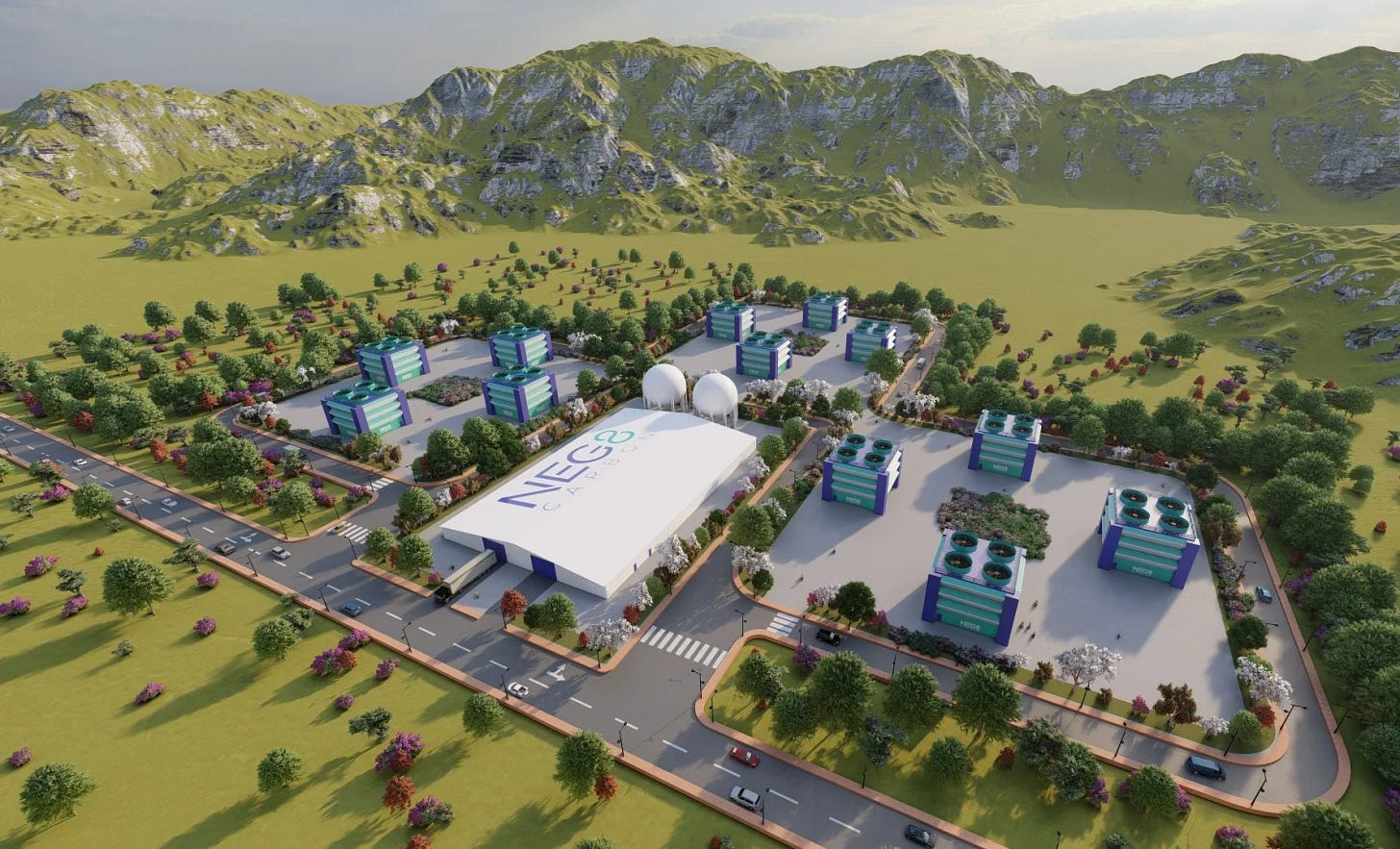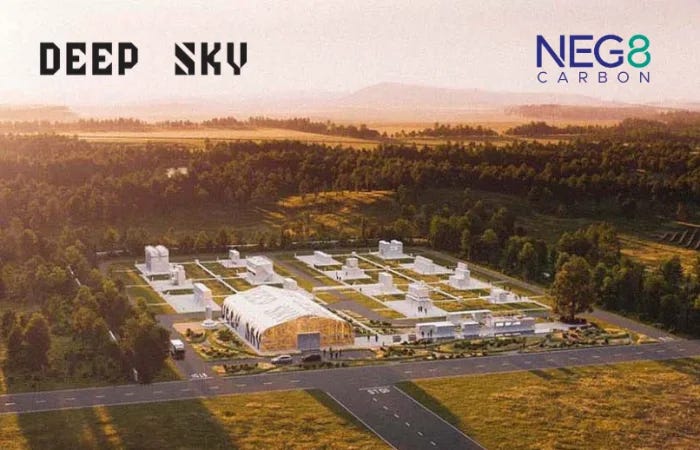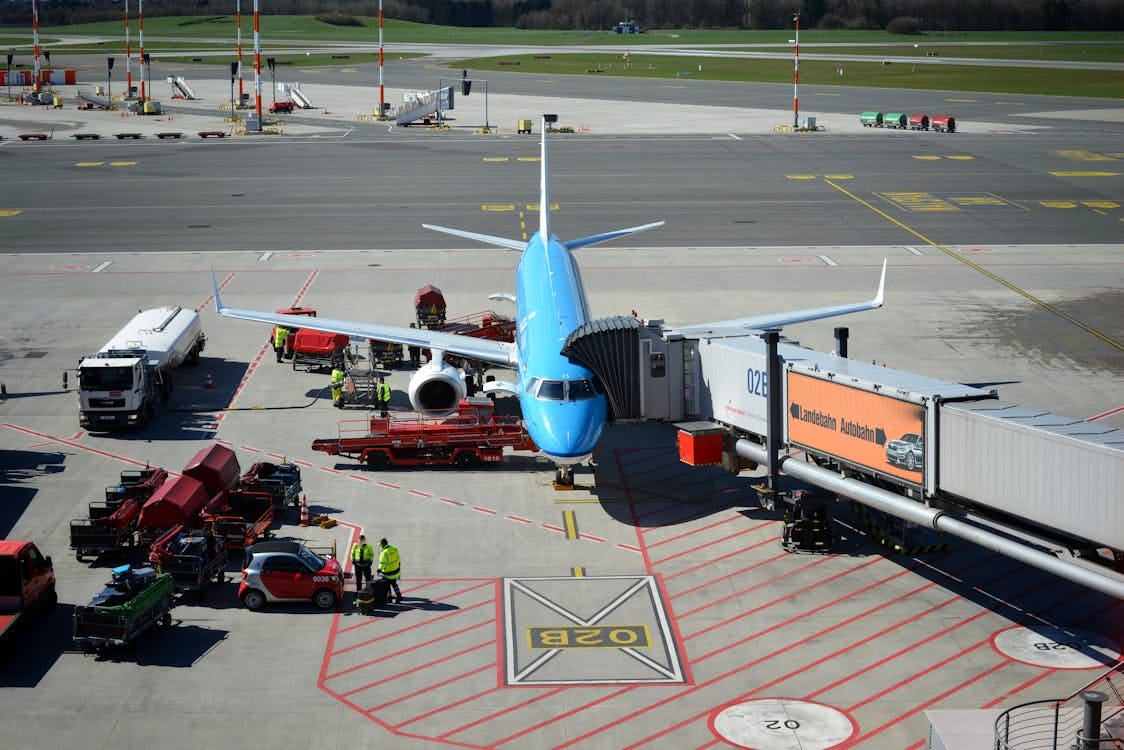How NEG8 Carbon is making direct air capture economically viable
An Irish startup’s breakthrough could finally bring DAC costs below €100 per tonne.
Direct air capture (DAC) machines are like cars, says Ray Naughton, CEO of NEG8 Carbon. "They look the same on the surface, but underneath, they couldn't be more different." Those differences, in the case of this Irish carbon removal startup, could finally make DAC economically viable.
Based in Waterford, Ireland, NEG8 Carbon has been working on pushing the boundaries of DAC technology since 2014. While companies like Climeworks have garnered headlines with their Icelandic facilities, NEG8 is looking to solve what many consider the field's biggest challenge: cost.
The cost challenge
"The first thing — probably the first and last thing — is how much per tonne would it cost to capture CO2 from the air? And can we get that cost below 100 euros a tonne? That's the forever question," explains Naughton.
The company's progress has been noteworthy.
Its first-generation technology costs between €1,000 and €2,000 per tonne of CO2 captured. The second-generation technology brought this down to €500-1,000. Now, NEG8's third-generation technology, which is currently moving from lab to scale testing in Waterford, costs between €100 and €200 per tonne, depending on waste heat availability.
"With waste heat, 100 euros [per tonne] is realistic," Naughton states. This puts NEG8 Carbon on track to break the critical €100/tonne barrier, often cited as the threshold where DAC becomes economically competitive.
The electrostatic breakthrough
NEG8's secret weapon in achieving all this is its patented "electrostatic" approach technology that has earned them a nomination for the prestigious Earthshot Prize.
The technology works like a specially designed sponge for capturing CO2. Traditional DAC systems require frequent replacement of these "sponges," driving up costs. They also need high temperatures to release the captured CO2, which consumes significant energy.
"It's a way of coating the capture material onto a heat exchanger, which allows very fast heat transfer," Naughton explains. This innovation both improves efficiency and reduces the amount of capture material needed by about 80%.
The most significant advantage is that their system operates at 65°C, cooler than competing technologies that require extremely high temperatures to release the captured CO2.
"The capture material lifetime is a big issue with direct air capture systems," says Naughton. "With high-temperature systems, you're constantly replacing expensive materials. Our low temperature approach means our materials last for five years or more instead of months."
This breakthrough delivers two crucial benefits: it significantly lowers operating costs and reduces energy consumption, addressing key criticisms that have dogged DAC technology since its inception.
Solving the energy problem
Direct air capture has been criticised for its high energy demands, particularly as other emerging technologies like AI data centres consume increasing portions of the electrical grid. In Ireland, data centres used 21% of the country's electricity last year, an increase of 20% from 2022 and surpassing the 18% consumed by all urban homes combined, according to the Central Statistics Office.
The situation is set to increase, with projections suggesting data centres could consume about 31% of Ireland's electricity within the next three years, mainly driven by AI processing demands.
NEG8 has an answer to this energy challenge.
"We can put the DAC farms anywhere," Naughton explains. "Data centres are mostly in the cities, mostly around the edges of big cities. So they can't locate where the power is. This is a problem at the moment. It has grid issues."
NEG8's approach is fundamentally different:
"In the case of DAC farms, we can have our own solar farms, for example, adjacent to the DAC farms, our own wind farms. We're using off-grid. We don't need grid power." This flexibility extends to their entire operational model. "The whole key about DAC is you never move the CO2," Naughton emphasises. "You always put the farm closest to the point where you're going to use the CO2."
By operating off-grid with dedicated renewable resources or using industrial waste heat, NEG8 sidesteps one of DAC's most common concerns: that it competes for limited clean energy resources needed for more immediate decarbonisation efforts.
National significance: addressing climate penalties
NEG8 Carbon's work represents more than technological innovation; it offers a potential economic solution to a growing global problem. As nations worldwide struggle to meet climate commitments, many face significant financial penalties for falling short.
Take Ireland, which faces potential payments of between €8 billion and €26 billion for missing its agreed 2030 EU emissions targets, according to reports from the Irish Fiscal Advisory Council (IFAC) and the Climate Change Advisory Council (CCAC).
This financial dilemma isn't unique to Ireland. Governments worldwide are confronting the reality that some emissions, particularly from sectors like aviation, cement production, and industrial processes, remain stubbornly difficult to eliminate through conventional means.
An analysis by NEG8 Carbon shows how DAC could cost-effectively address these hard-to-abate emissions.
For Ireland, NEG8 Carbon has estimated that a network of 1,333 DAC towers, each capturing 6,000 tonnes of CO₂ per year, could handle the approximately 8 million tonnes that conventional reduction efforts struggle to eliminate. These towers would require only about half the area of Dublin Airport, which is a fraction of the land needed for equivalent emissions reduction through other means.
Scale without the footprint
That analysis directly addresses another question about the physical space required for DAC to make a meaningful difference.
Naughton uses this comparison: "It's about 10,000 times more efficient than trees. That gives you a sense of the comparators. So we don't think that the footprint is significant."
He points to the company's Canadian partner, Deep Sky, where it will operate NEG8 Carbon’s DAC system as part of its Deep Sky Labs direct air capture test facility. The system will be installed in Innisfail (which means “Island of Destiny” in Irish), Alberta, later this year.
With Deep Sky operating in Western Canada, Naughton notes that “they have so much space….they can have half a million acres if they want." For that reason, Naughton believes that areas like Manitoba and Alberta, where abundant space can be twinned with off-grid renewable energy use, will be key to developing the DAC industry.
More encouragingly, NEG8's technological improvements have resulted in "a shrinking of the scale of the system, and the weight of the system" as costs have come down, suggesting that future generations of the technology may require even less physical space per ton of CO2 captured.
Strategic carbon utilisation beyond storage
While geological storage represents one pathway for captured carbon, NEG8 is developing multiple high-value applications, including some where captured CO2 becomes a vital resource. The company has four main project areas:
Geological sequestration with partners like Deep Sky in Canada
Sustainable aviation fuel (SAF) production
Building materials integration
Research partnerships exploring next-generation carbon applications
NEG8 is currently bidding to be involved in a SAF project that would use its captured CO2 as a key feedstock and combine it with green hydrogen to produce e-fuel.
"If you get involved in the SAF business, you're joining together into a consortium”, says Naughton. “You need clean energy sources, hydrogen generation, and CO2 capture — which is us."
This approach creates what Naughton describes as a circular carbon system: "We're combining CO2 with hydrogen to produce fuel, which is then burned. We capture that CO2 again in a continuous cycle, creating a net-zero activity."
In the future, Naughton sees significant potential for NEG8 in the SAF space, as e-fuels companies look for sources of CO2 and as SAF mandates start kicking in.
At the same time, the aviation industry is turning to carbon removals as a more effective alternative to carbon offsetting to reach its net-zero targets. Airlines that have either invested in or are working with carbon removal companies include Lufthansa and SWISS (with Climeworks), British Airways (with several partners), United Airlines (with Heirloom) and American Airlines (with Graphyte)
Pragmatic climate solutions
Naughton is pragmatic when asked about concerns that DAC might distract from emissions reduction efforts. This comes as major oil companies like Oxy invest heavily in the carbon capture space.
"If big oil were to compensate all of their carbon emissions by capturing CO2 and storing it, is that a bad thing?" he asks. Drawing a parallel to his own evolving views on energy technologies, he continues: "Years ago, I used to be very anti-nuclear. I'm now very pro-nuclear. Why? Because I can see that in order to stop global warming, we need to use zero-carbon power sources."
His conclusion reflects the urgency of the climate challenge: "We have a serious world crisis. And if a future technology can help us, let's get on board and use it."
Looking ahead
Further refinements are expected to increase efficiency and lower costs, so NEG8 Carbon appears poised to address many of the concerns that have dogged DAC technology while delivering a practical solution for carbon removal.
As the company moves from the lab to commercial-scale deployment with partners like Deep Sky in Canada, it demonstrates that innovative engineering can overcome what many consider insurmountable barriers to direct air capture.
"We are going to see many more innovations happening in this space," Naughton predicts, "which will drive down further the cost and further the footprint that these systems take up."
For a technology once dismissed as too expensive, too energy-intensive, and too impractical to make a difference, NEG8's progress suggests that direct air capture may become a valuable, and more importantly, viable tool in the climate solution toolkit.






